Photostory by Jakob Scheler
CHAnces IN Sustainability - promoting natural resource based product chains in East Africa
All pictures were taken during a research stay as part of the CHAINS-project (CHAnces IN Sustainability - promoting natural resource based product chains in East Africa) in July 2016. As a bachelor student at that time I had the chance to be part of team of researchers and students from TU Dresden (Germany) and University of Gondar (Ethiopia) that focused in their research on small-holder eucalyptus production in Northern Ethiopia. All pictures except for one were taken in the Woger woreda (district) in Amhara region. One pictures showing timber traders was taken in the city of Gondar.
The Ethiopian highlands had experienced massive deforestation, forest and land degradation for a prolonged time (Lemenih and Kassa, 2014) . The expansion of eucalyptus farm woodlots marks a turning point in this ongoing process. Across scientific literature many positive effects like securing rural people’s livelihoods, securing tenure rights, provision of fuel wood, fighting environmental degradation, erosion control and less pressure on natural forests are named in favor of the establishment of such woodlots (Bekele, 2011; Darr and Pretzsch, 2006; FAO, 2009; Jagger and Pender, 2003; Jenbere et al., 2012; Lemenih and Kassa, 2014). One farmer we interviewed explained to us: “ Eucalyptus is everything to us! We use it as fuel wood, built our fences and houses, make tools for the household and farming from i t.”
Besides the positive impacts eucalyptus for people and improving degraded landscapes its planting also leads to conflict among farmers. Eucalyptus is a water competitor for agricultural crops and has negative effects on crop yields if planted in close proximity due to its allelopathic traits (Ayele, 2008; FAO, 2009; Jagger and Pender, 2003; Jenbere et al., 2012). Eucalyptus planting has repeatedly led to conflict between neighboring farmers if crops were effected.
I choose to only submit pictures with people in them. Humans are an environment making species and thus at the heart of the topic of land improvement and degradation. During my research I interviewed people of different gender, economic and social status. All of them were involved in eucalyptus planting. Small holder woodlots help to upgrade and improve degraded land in the area we studied. The local people are closely connected to the resources gained from it and use the wood in all areas of their life.
References
Ayele, Zeleke Ewnetu (2008). “Smallholder Farmers’ Decision Making in Farm Tree Growing in the Highlands of Ethiopia.” PhD thesis. Oregon State University, Corvallis.
Bekele, Million (2011). “Forest plantations and woodlots in Ethiopia.” In: African Forest Forum Working Paper Series 1 (12), pp. 1–51.
Darr, Dietrich and Jürgen Pretzsch (2006). “The spread of innovations within formal and in- formal farmers groups: Evidence from rural communities of semi-arid Eastern Africa.” In: Conference on International Agricultural Research for Development, Tropentag, University of Bonn, 11-13 October.
FAO (2009). Eucalyptus in East Africa: The Socio-economic and Environmental Issues. Ac- cessed online on 27.09.2016. FAO Sub-regional Office Eastern Africa, Addis Ababa. URL : www.fao.org/3/a-aq401e.pdf .
Jagger, Pamela and John Pender (2003). “The role of trees for sustainable management of less-favored lands: the case of eucalyptus in Ethiopia.” In: Forest Policy and Economics 5, pp. 83–95.
Jenbere, Dereje, Mulugeta Lemenih, and Habtemariam Kassa (2012). “Expansion of euca- lypt farm forestry and its determinants in Arsi Negelle District, South Central Ethiopia.” In: Small-Scale Forestry 11, pp. 389–405. DOI : 10.1007/s11842-011-9191-x.
Lemenih, Mulugeta and Habtemariam Kassa (2014). “Re-greening Ethiopia: history, chal- lenges and lessons.” In: Forests 5, pp. 1896–1909. DOI : 10.3390/f5081896.
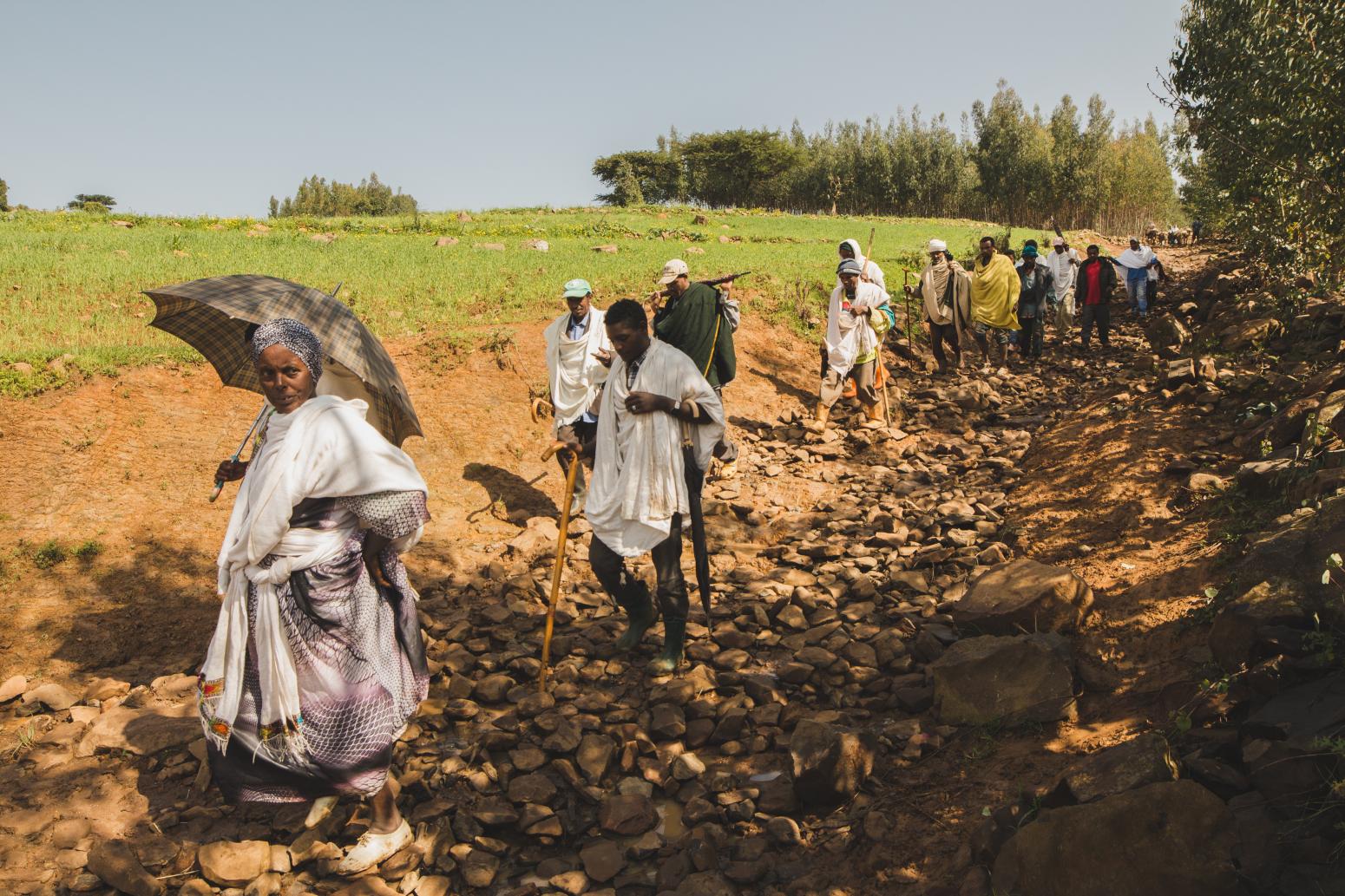
A group of villagers on the way to a funeral. In the background you can see an eucalyptus plantation next to crop land. During the heavy rainfalls the path transformed into a stream. The picture shows the possible conflict between different land use types and the prevailing erosion problem in the area.
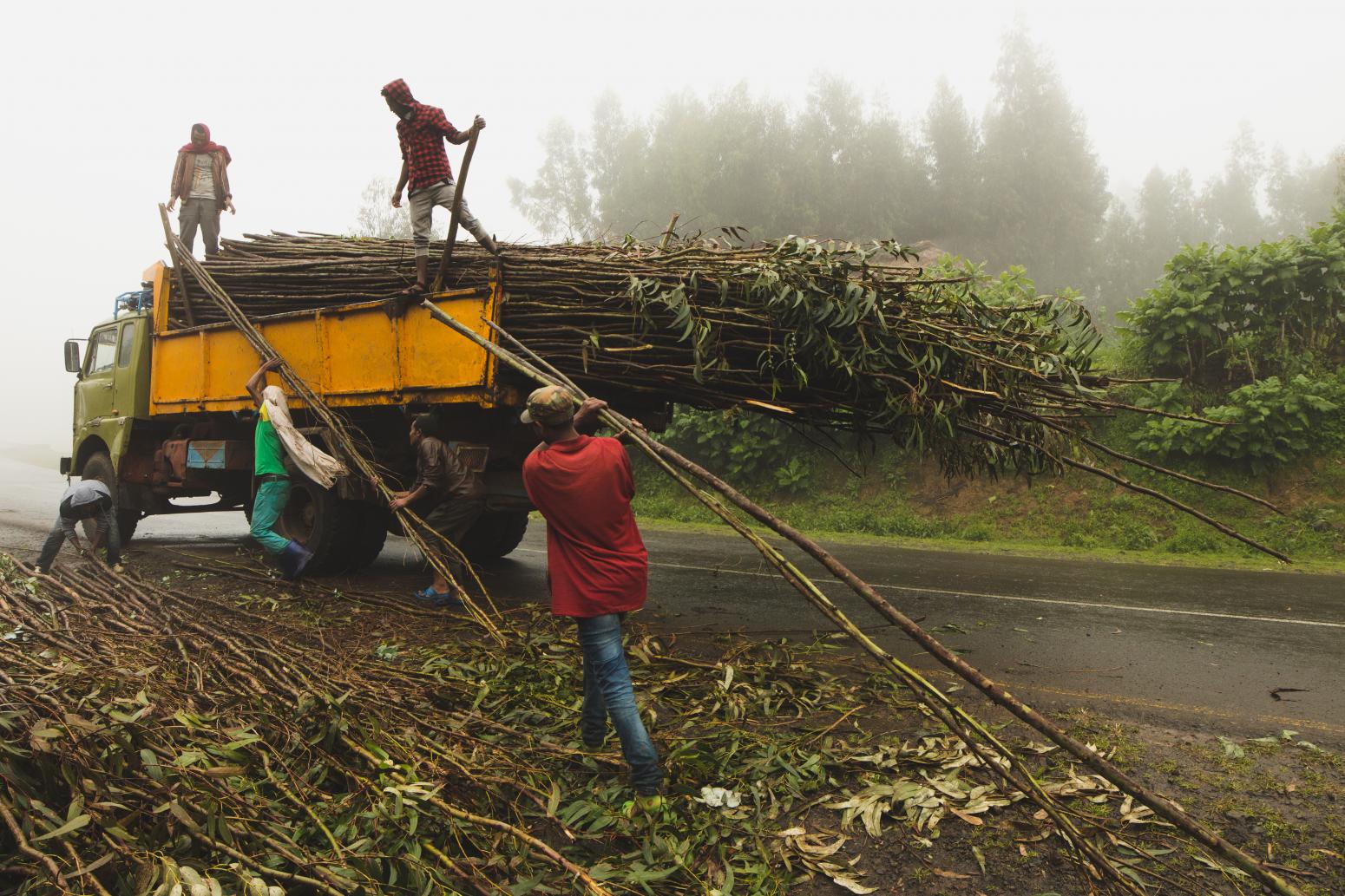
Wood traders load eucalyptus onto a truck. The traders are in many cases actively involved in the harvesting activities.
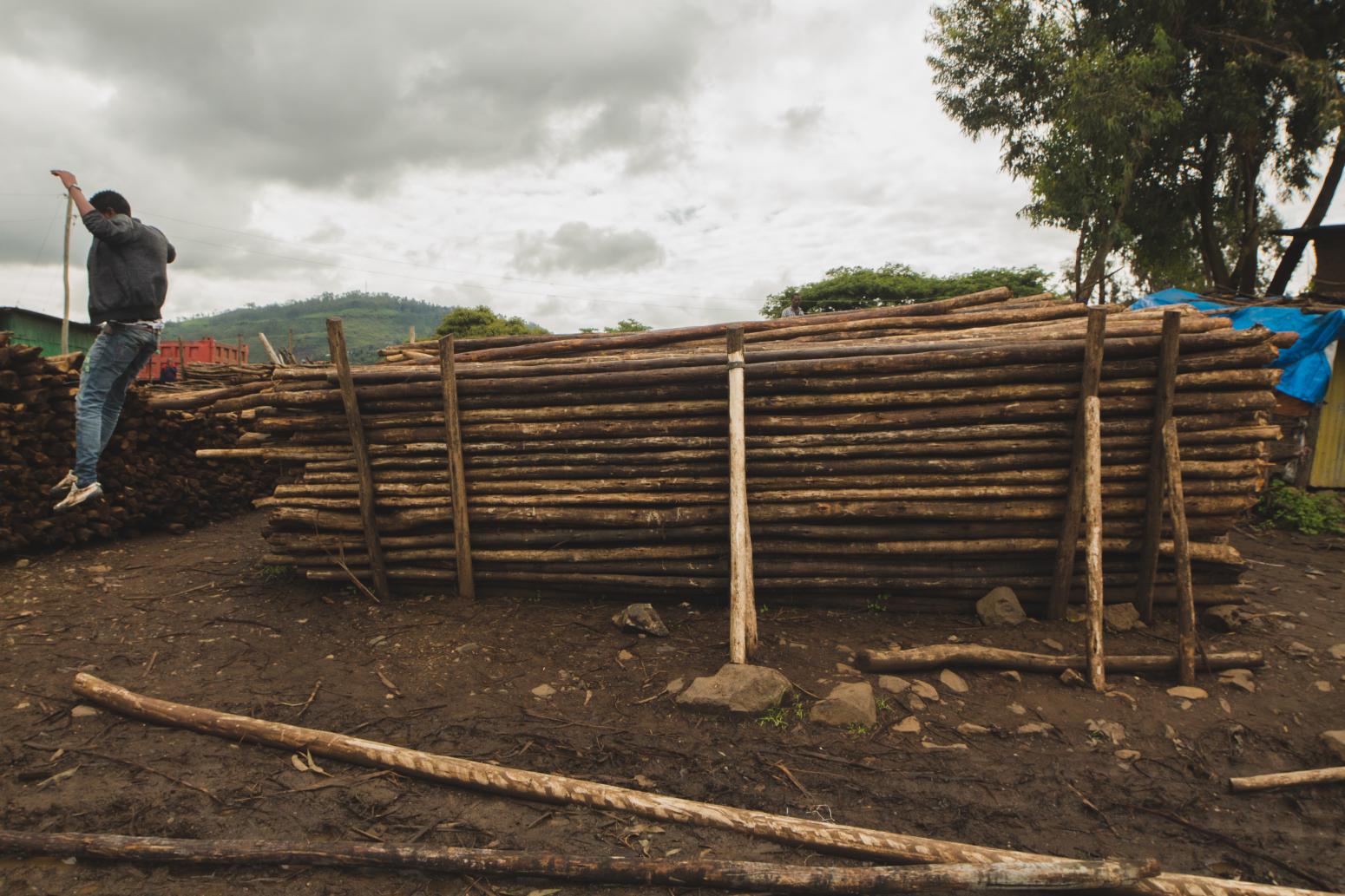
A wood retailer in the city of Gondar jumps of a pile of eucalyptus. Ethiopia is one of the world’s fastest growing economies and in the dire need for construction wood, especially in the expanding capitol Addis Abeba. Eucalyptus helps to reduce the pressure on the few natural forests that are left in the country.

A woman and her children are collecting fuel wood. Besides dung, wood is the main energy source. Fuel wood collection is mainly considered women’s work in the area.
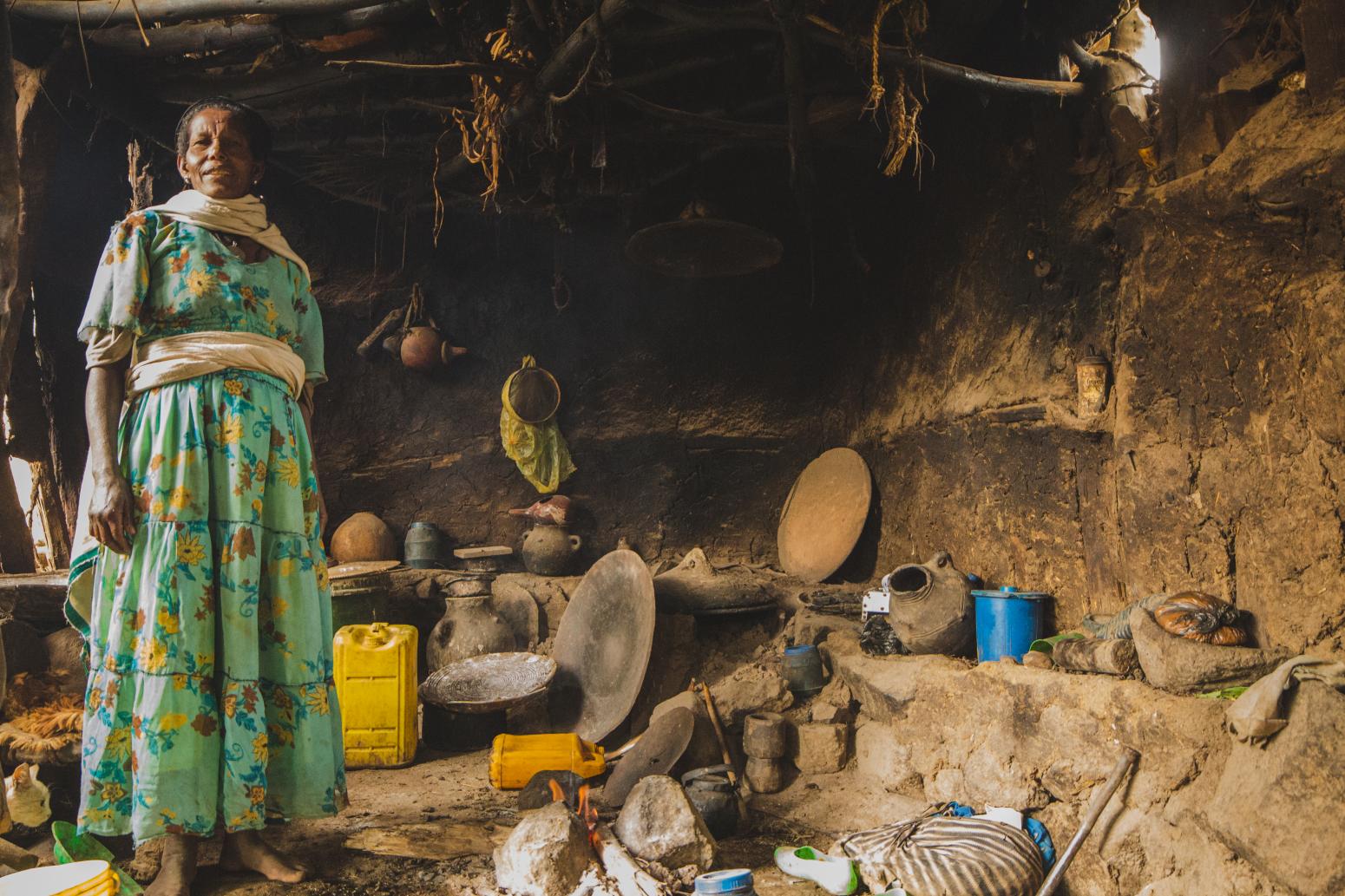
A woman we interviewed proudly shows her kitchen. Eucalyptus that is not sold is used for construction, tools, and as fuel wood for cooking.
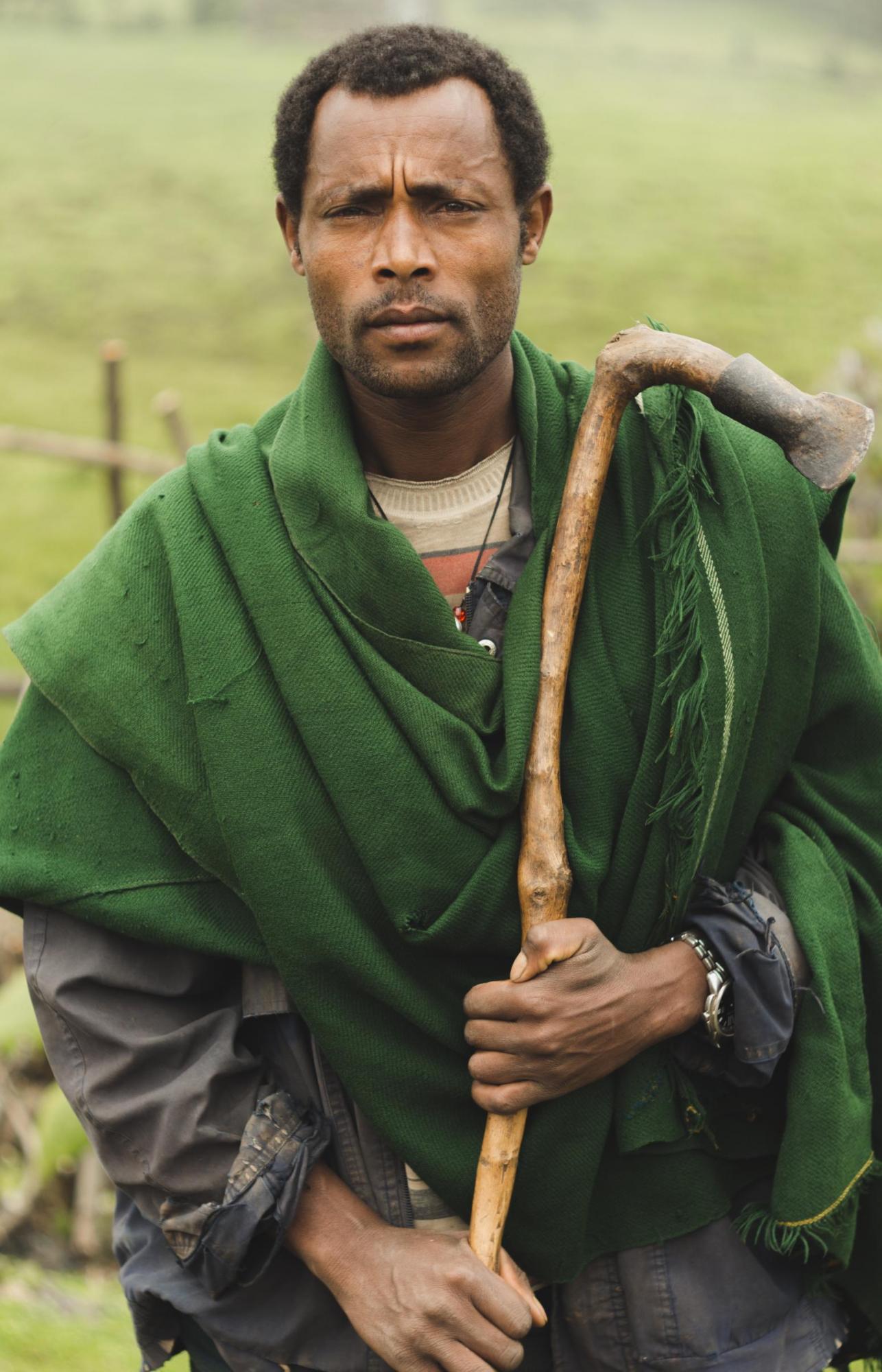
A local farmer displaying his axe. Eucalyptus woodlots are managed with simple tools. For the farming household eucalyptus provides the material for all areas of their life.
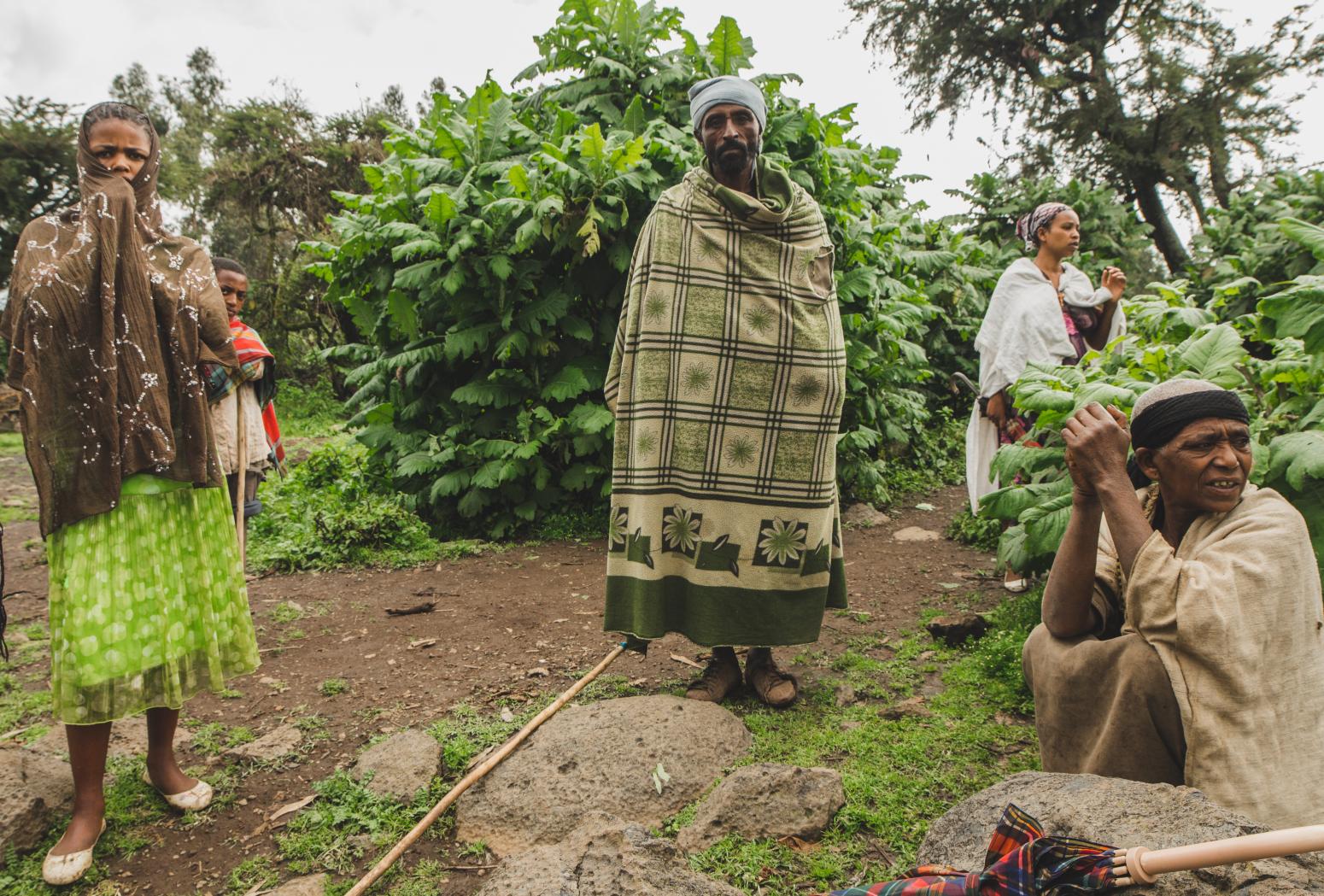
One of the few farming households we interviewed that also planted native tree species.The potential of native tree species for farm woodlots and landscape restoration was at the time of our research stay still not sufficiently researched. The majority of farmers prefer eucalyptus for its fast growing property. Also it is easily sold due to high demand on the market.
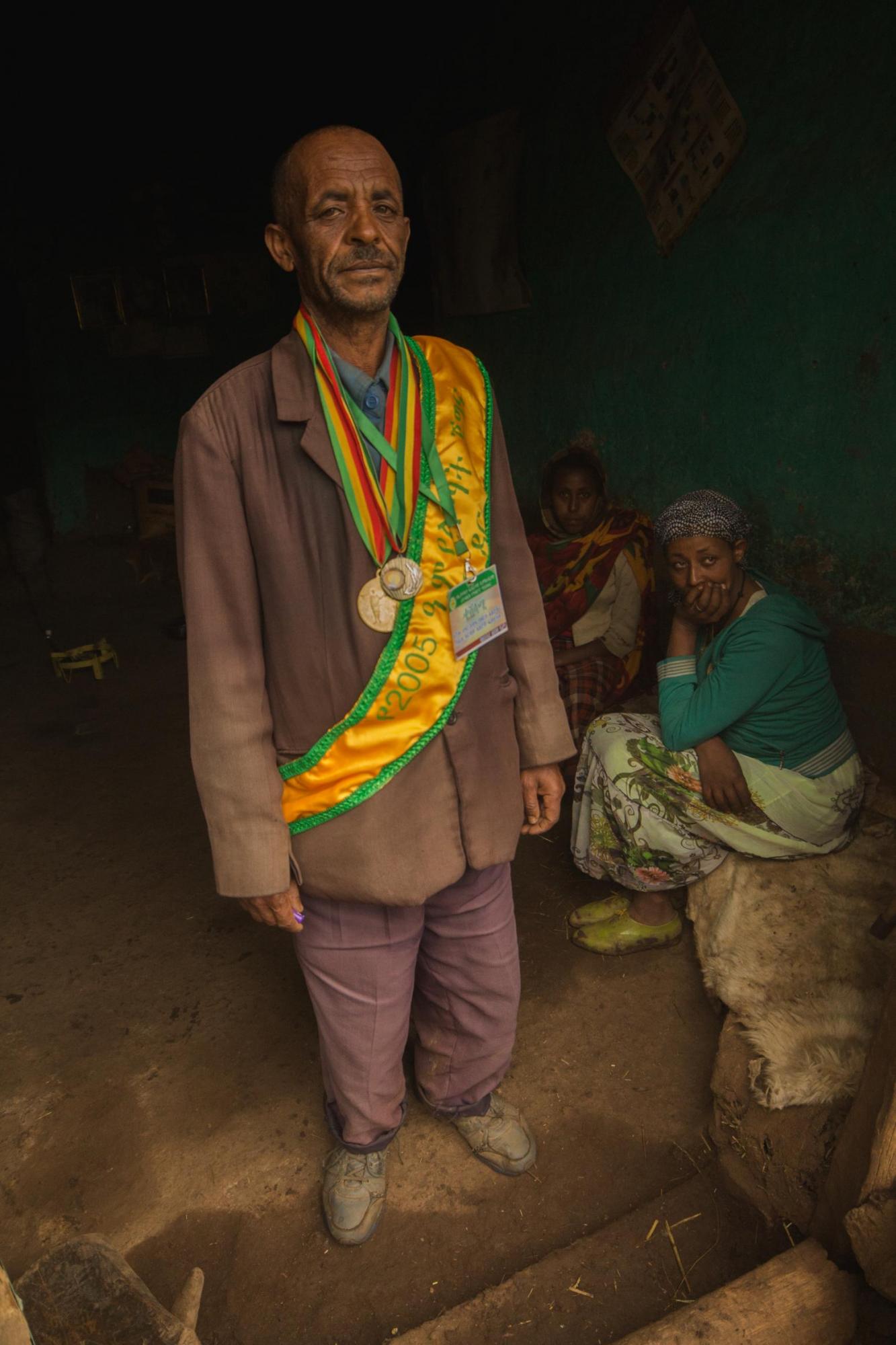
The chairman of the local court informed us about conflict between farmers due to eucalyptus planting. He was also a model farmer with whom NGOs cooperated to introduce new technologies into the community. Together with one NGO he had built a biogas plant. In the background you can see the little yellow stove run on gas obtained from farm residues . The aim was to lower the dependency on fuel wood. Also the chairman planted many native tree species around his homestead to promote their use in the community again.
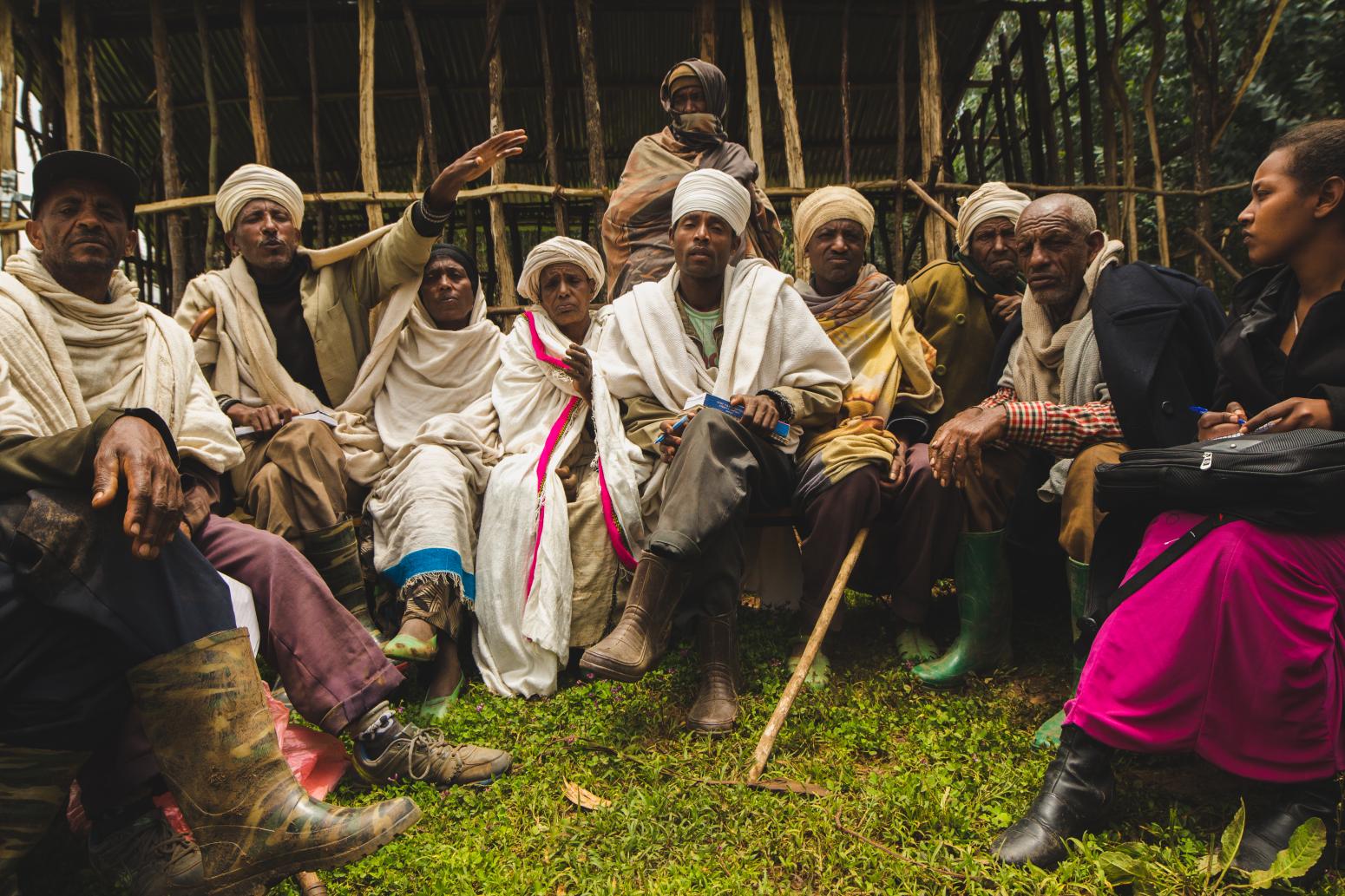
A focus group discussion with farmers involved in eucalyptus planting. The participants provided many valuable information about their views on eucalyptus, its benefits and problems and where more support is needed to achieve sustainable landscape restoration.
